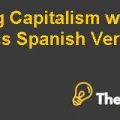
Problem Statement
Ciba-Geigy faced a difficulty while deciding whether invest in core business i.e. pigments or not. If the company did investment in the business, it would be against the rule of not investing in core businesses based on the portfolio management.
Analysis
The company had been doing great since its start in 1750 by continuously evolving into new business segments. There were no rigid procedures for planning and strategic management; however, the firm came across changing their way of operating in response to second oil crisis. The company became more focused on the corporate-strategic planning and eventually inculcated the portfolio planning. The portfolio planning was introduced to the company with an intention to put focus oneach and every business. The company’s businesses were divided into different portfolios assigned with different objectives. The company could place more focus on each business unit in this way. However, the question was why the company decided to develop its own portfolio planning model despite the availability of other models such as Boston Consulting Group Matrix (BCG Matrix). This was perhaps due to the thinking of the top management who wanted to divide businesses into more discrete units. For example, BCG offered portfolios to be divided in Stars, Cash Cows, Dogs and Question marks based on market share and market growth. However, the company later resulted in categorizing business units into five categories based on several aspectsas it wanted a possible perfect model to plan its portfolio which could guide further planning.
Since the company came across forming its own portfolio planning model, things became easier. There were many benefits of switching to portfolio management and planning because the company had divided objectives into differentportfolios. With portfolio management, the company was able to find new ways towards growth and diversification. Every business was managed in a better way under the categorization of business into five groups as planning was done according to the category in which a particular business was placed. Moreover, by the virtue of effective top management, each business knew its role in the portfolio. The five categories of portfolio were: development, growth, pillar niche and core. It was supposed that development and growth portfolios needed continuous investment injections whereas pillars and niche were quite similar leaving core as the most stable and financially strong portfolio.
The company had great trust in the portfolio planning which could be seen in the top management. Lippuner, the chairman of executive committee believed that portfolios told them what to do. However, the company did face difficulty when the decision about Newport investment proposal had to be made. The pigment division head, Schutz under the core category of portfolios requested a major investment for modernization and amelioration of Newport manufacturing plant. However, the problem was that if investment was approved, it would be against the principles of the portfolio management formulated by the company. As the Newport manufacturing plant fell under the *core* category, a huge investment was not justified. Yet the violation of portfolio principles was a big question. There was another question that stated what would company get if its sticks to principles of making huge investments in core businesses. It seemed all fuzzy yet the major investment was justified on the basis of reasons Schutz gave in the favor of investment.
Recommendations
The company had three options (1) to make full investment of 140 million dollars (2) a mediocre investment of 100 million dollars or to close the plant and switch to the manufacturing plant in Alabama or Louisiana. Schutz was in favor of making full investment as he was consistent with his claim that the company would cover up the investment in no time. Moreover, he assured that the company will retain a positive cash flow in next five years. He also assured that the proposed investment will maintain 10% RONAand recommended the company to accept the proposal and work on it as it seems to be the best option. The pigment industry also faces strict regulations regarding environmental issues and the proposed investment promises to reduce the pollution by 80% and save up to 2-3 million dollars annually. There were questions about the third option which was according to principles of portfolio planning at Ciba which aimed to move the manufacturing to Alabama plant................................
This is just a sample partial case solution. Please place the order on the website to order your own originally done case solution.
Covers the history of portfolio planning at Ciba-Geigy, Switzerland's leading chemical and pharmaceutical, since the introduction of the process in the mid-1980s. Discussion continues on the application of portfolio planning for a certain investment proposal. Comprehensive modernization of the plant has been producing high quality pigments specialty "Hide
by David J. Collis, Elizabeth Johnson Source: Harvard Business School 13 pages. Publication Date: January 17, 1995. Prod. #: 795040-PDF-ENG













